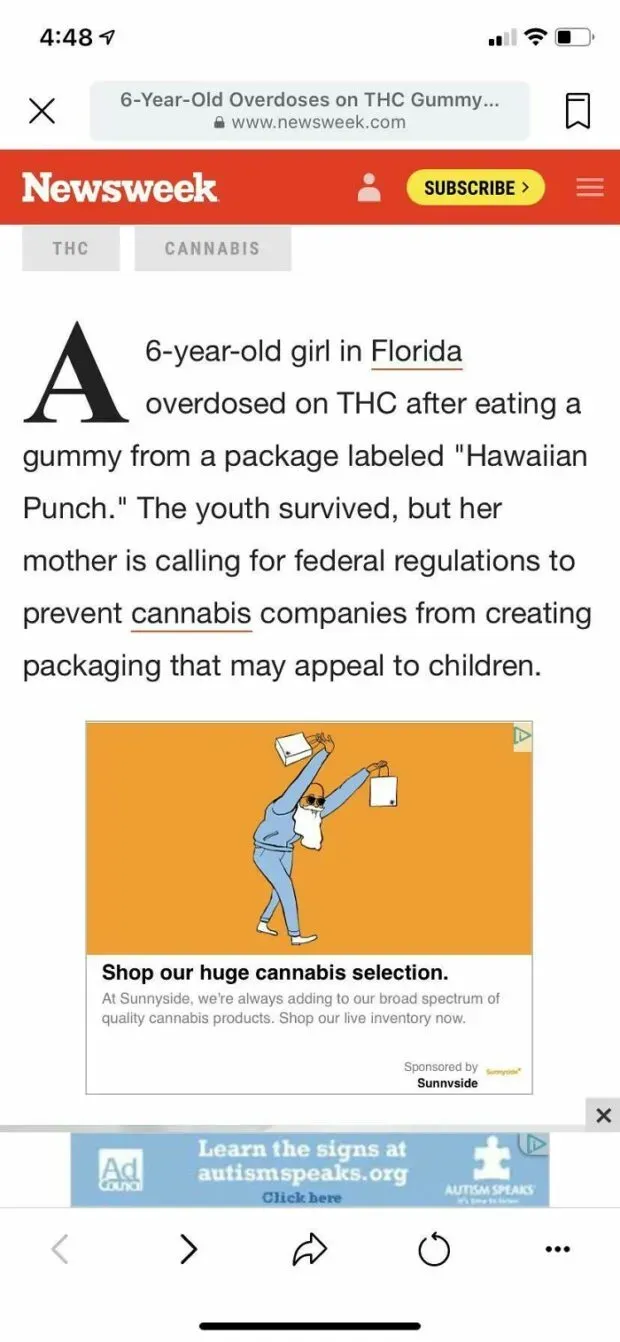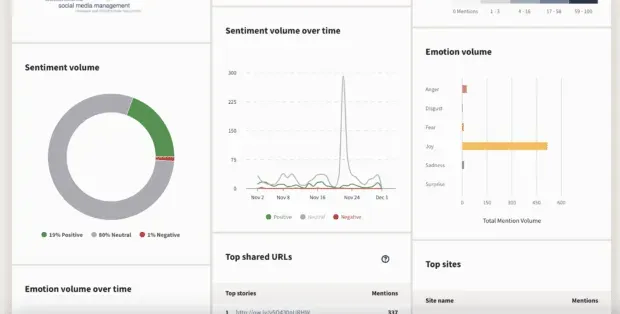In today’s digital age, it’s imperative for marketers to take steps to protect their brand’s safety online.
Social media is great at building brands and building connections between companies and their customers. But it also comes with the risk of associating a brand with content that could damage its reputation.
In this article, we’ll share strategies and best practices that marketers can use to protect their brand’s social media reputation. From monitoring and eavesdropping on social media to knowing when to switch off, we offer practical steps to keep your brand safe online.
What is brand security?
Brand safety means that the company’s advertising will not be associated with content that could harm the brand’s reputation. This includes avoiding content that may be offensive, controversial, illegal or unethical.
Brand safety is most often discussed in the context of paid advertising. But this also applies to organic social media, or anywhere else a brand can appear online.
Why is brand safety important?
Brand security is important to marketers because it directly affects the reputation and image of the brand they manage.
67% of consumers say they are more likely to stop using a brand or product if they see brand ads next to false, objectionable or inflammatory content.
A brand safety incident can also damage a brand’s relationships with partners, suppliers, and other employees.
For marketers, brand safety is most relevant when placing ads on social media. Brands around the world spent $181.2 billion on social media in 2021, and more is being spent every year.
No matter how big or small your paid social budget is, taking the time to optimize brand safety will help you get the most bang for your buck.
Brand safety risks
Ads next to inappropriate or offensive content
In programmatic advertising, advertisers buy ad space through distribution platforms rather than from individual publishers. In 2022, 90% of digital advertising spend was programmatic advertising.
This is an effective way to buy targeted ads with a wide reach. But the trade-off is that advertisers don’t have full control over where their ads appear.
Many social media advertising platforms offer placement using “audience networks”. This may mean that your social media ads may be displayed alongside inappropriate or offensive content. Here is an example:

Source: Reddit
In this case, the advertiser is likely targeting the keywords “THC”and “cannabis”. They probably didn’t expect their ad to appear next to an article about a negative incident caused by a cannabis product.

Source: Reddit
Yes. In this example, the advertiser could have avoided this placement by adding inappropriate publisher names to the keyword blacklist.
Troubled Influencers Endorsement
Collaborating with a public figure, influencer, or content creator can increase your brand awareness. However, these opportunities come with big risks for brands.
Influencers often share their personal views and opinions on their channels. These opinions may not always be those of previous or current partners.
One example: a nearly decade-long partnership between Adidas and Kanye West’s Yeezy product line. This long collaboration came to an end in late 2022 after Kanye West’s public anti-Semitic comments.
The end of this partnership means that Adidas has dropped the product line and lost a lot of sales. But the brand has determined that associating with a public figure who goes against their values poses a greater risk.
Use of a hashtag associated with dangerous content
When launching a new campaign or content series, hashtags can really help improve reach and engagement. But first you need to do some research. Otherwise, you risk your brand posts showing up in searches with insecure content.
Online clothing retailer Dorothy Perkins discovered this the hard way when she decided to use the #LoveDP hashtag. (Don’t google, just trust us.)
Payment for fraudulent clicks
Programmatic advertising also runs the risk of attracting bad traffic. If your brand ads appear on questionable websites, your website may be a target for bot traffic.
Why is that bad? Irrelevant traffic will lower your website’s conversion rate. Bot traffic can also weaken your position in the SERPs. Ad fraud cost businesses $35-40 billion in 2020.
Brand safety can be one of the biggest concerns for brands online, largely due to the way social media exploits user-generated content. After all, you can’t prevent users from mentioning your brand along with offensive content.
However, we will tell you about five things you can do to protect the safety of your brand.
1. Develop a social listening strategy
Social listening is a marketer’s best line of defense when it comes to preventing brand safety incidents.
With a tool like Hootsuite, you can use multiple threads to do things like:
- Set alerts for your brand + “crisis keywords/phrases”like “disaster”, “nightmare”, “accident”, “terrible”and “never again”.
- Set thresholds to detect bursts of mentions, posts, and comments.
- Watch for large mood swings that may indicate a negative or positive situation with the client.
You can also use an advanced social listening tool like Brandwatch’s Hootsuite Insights. Insights can help you track social sentiment over time and put out (metaphorically) fires before they start.

2. Plan for a Social Media Crisis
What’s as important as having a well-planned, strategy-driven content calendar? Know when not to post.
A social media crisis plan is a great tool to protect your brand safety. Here’s what it should include:
- Criteria for suspension of publications during major world events (and criteria for deciding whether to resume publication)
- Guidelines for responding to a large number of customer complaints and concerns
- Message approval processes and contact information for key stakeholders required for approvals
- Internal communications plan
With Hootsuite, you can pause all messages with one click and show an alert to all users in your organization.
3. Create a policy for social media employees
More and more employees are creating content related to their employers these days. But with any collaboration there is a risk.
Employers cannot control the personal profiles of employees. This means that even employee-generated content can compromise brand security.
One way to mitigate this risk is to establish a social media policy. These documents define what employees can and cannot do. They also explain how to be good employee advocates.
4. Determine your brand’s safety threshold
Before you start implementing a brand safety strategy, you need to know how risk tolerant your brand is.
Some topics, such as pornography, terrorism, and disinformation, are explicitly prohibited. But depending on their values, brands can also avoid topics like religion, politics, and nudity. For example, Disney probably wants to avoid sexual content. Durex, most likely not.
Most ad platforms offer the ability to select different levels of risk for the content that your ads will appear next to. Levels range from restricted (least risky, less coverage) to broad (more risky, wider coverage).
5. Use negative targeting
If you know there are terms or phrases that you would never want to associate your brand content with, you can blacklist a list of those terms as “negative keywords”to avoid related placements.
However, be careful as negative targeting can inadvertently reduce your reach. For example, a word like “knife”might exclude cooking videos or recipe blogs.
Pro tip: Use your brand’s safety threshold and brand values to find negative keywords. Be sure to update them regularly and consult with your social services and customer service teams to include terms and conditions.
Brand safety best practices across platforms
Facebook and Instagram brand safety tips
Meta has created the Brand Safety Center, where marketers can adjust their brand safety settings that apply to ads shown on Facebook, Instagram, Messenger, Whatsapp, and the Meta Audience Network.
Before launching your next Facebook or Instagram ad campaign, we recommend checking the following settings in the Brand Safety Center:
- inventory filter. Marketers can choose the level of content privacy in which ads can be displayed. Please note that if you select limited inventory, your reach will be reduced and you may be charged higher advertising costs.
- Black list. Allows you to enter specific URLs, Facebook pages, or Instagram profiles where you don’t want ads to appear.
- Topic exceptions. If you run in-stream video ads, you may opt out of certain placements in videos about gaming, news, politics, religion, and spirituality.
- Delivery report. If you’re not sure which sources to add to block or exclude lists, you can view impression reports to see where your past ads have shown. If you find a publisher or placement that you want to avoid in the future, you can blacklist them directly from the report.
Learn more about Facebook brand security controls.
Twitter Brand Safety Tips
Given that Twitter was originally a communication-centric platform, Twitter’s brand security risks have always come under more scrutiny. And given Twitter’s history of misinformation, hate speech, and spam accounts, even the most cutting-edge brands need to take extra care that their Twitter ads don’t violate brand safety standards.
Here are some ways to protect your brand on Twitter:
- Neighborhood control. Add up to 1000 negative keywords to control the tweets that appear above and below your ad in the user’s timeline.
- Campaign placements. Control where your ads are placed. You can exclude locations from, for example, search results, user profiles, and replies.
- Opting out of content. Select specific categories of content in which you do not want to show ads.
- Black list. Exclude specific publishers that you don’t want your ads to show next to.
- Application exclusions. If you advertise on the Twitter Audience Platform, you can exclude up to 2,000 apps.
- Keyword exclusions. When setting up your ad campaign, you can add negative keywords to prevent your ad from appearing in search results for these terms and not being shown to users who have tweeted or interacted with these terms.
Learn more about Twitter’s approach to brand safety.
TikTok Brand Safety Tips
While TikTok has had relatively less time than its competitors to develop a brand safety policy, the platform already offers a strong mix of industry-standard settings and third-party tools that should put any marketer looking to advertise on TikTok at ease.
Here’s how to use TikTok’s brand safety features:
- inventory filter. TikTok uses machine learning to analyze text, audio and more in videos to determine the level of risk. Advertisers can then choose their preferred security level next to which ads will appear.
- openSlate. TikTok offers a third-party tool called OpenSlate that calculates what percentage of ad impressions are considered “brand safe”.
- Partnership with IAS. Advertisers can sign up for the TikTok Integral Ad Science (IAS) integration when setting up a campaign, which ensures that ads appear alongside safe content. After a campaign, advertisers can check the IAS report to see ad visibility, invalid traffic, and app-level brand safety.
- Comment management. TikTok allows advertisers to block comments based on keywords, hide or show individual comments, select a pinned comment, disable comments, and export comments for mass analysis.
Check out TikTok’s full brand safety hub.
LinkedIn Brand Safety Tips
Most of LinkedIn’s brand safety controls apply when advertising on the LinkedIn Audience Network, which are sites and apps outside of LinkedIn where branded ads can be displayed.
The main settings include:
- Black list. If you’re advertising on the LinkedIn Audience Network, you can view the entire list of publishers to see where your ads could potentially appear. If you notice someone you would like to be excluded, you can do so by adding them to your blacklist.
- Allow list. If you want LinkedIn to prioritize certain publishers when running your ads, you can do so by adding them to the allowed list.
- Third Party Applications. LinkedIn allows you to connect external apps like DoubleVerify that help brands avoid inappropriate content and appear on context sensitive sites and apps.
Learn more about LinkedIn’s brand safety features.
Pinterest Brand Safety Tips
Pinterest is committed to high brand safety standards and has developed a robust policy that focuses on advertisers and users.
Here are some settings to protect your brand on Pinterest:
- Turn off comments. For organic Pins, brands can remove comments or disable them altogether. For Paid Pins, users cannot comment (this is the default setting and cannot be changed).
- Placement of advertising. Marketers can manually choose where to show ads, including browsing (home feeds and related contacts), search, or all placements.
- Keyword exclusions. Marketers can use negative keywords to prevent their ads from appearing in search results related to those keywords.
- Opting out of advanced targeting. Generally, advanced targeting allows Pinterest to expand the reach of your ads by showing them to people outside of the keywords and interests you specify. However, if you don’t want ads to appear in an inappropriate context, you can disable this setting.
Learn more about Pinterest’s brand safety practices.
YouTube Brand Safety Tips
In 2017, YouTube came under scrutiny for displaying ads alongside controversial videos, leading many major brands to boycott ads on YouTube. Since then, Google has been hard at work developing brand safety features to win back the trust of marketers.
These features should help maximize the safety of your brand’s YouTube ads:
- inventory modes. By default, YouTube will never show your ads in the most controversial content. This means you never have to worry about your ads appearing in videos of terrorist attacks, nudity, and recent sensitive events. With inventory modes, marketers can control the types of contextual violence, profanity, and sexual content that ads appear next to (such as comedies, music videos, and videos showcasing video games).
- Content exclusions. You can opt out of embedded YouTube videos (which are shown on websites outside of YouTube.com) and live videos (which may be more risky).
- Negative words. The keywords you add to the blacklist will be used for filtering based on keywords in titles, descriptions, tags, and metadata.
- Brand safety targeting. Allows marketers to target ads based on digital content labels (i.e., suitability for general and adult audiences), sensitive categories, and third-party verification services (including IAS and DoubleVerify).
As the amount of content on the Internet continues to grow, brand security is becoming more of a challenge. By following our recommendations and using security tools, you can mitigate risks and protect your brand.


